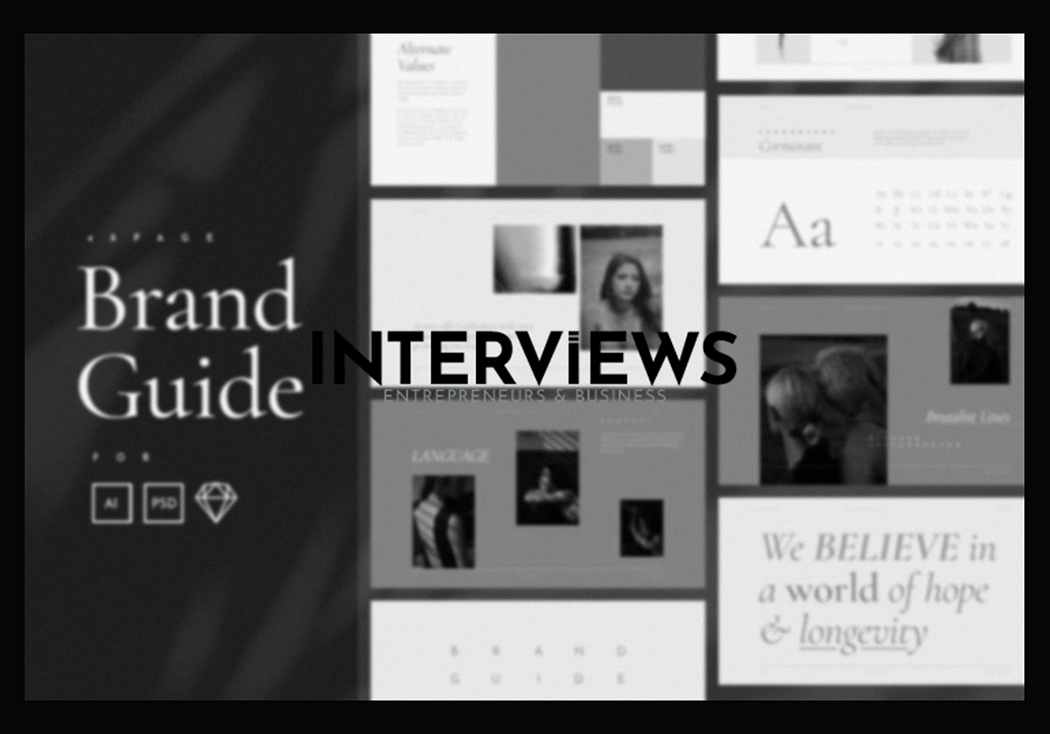So, You Want to Be a Fashion Mogul? Buckle Up, Buttercup: The Real Costs of Launching a Clothing Line
Dreaming of your designs on runways or in boutiques? Starting a clothing line seems glamorous. Think twice. It’s less red carpets and more spreadsheets. Spreadsheets are essential. Here’s a breakdown of the cash you need to launch your fashion empire.
The Price Tag of Your Sartorial Dreams: Startup Costs Deconstructed
First, are you planning world domination from your laptop, or will it be a retail store? The starting costs look very different, based on your ambition and budget.
Option 1: The Digital Runway (Online Clothing Line)
Launching an online clothing store is the less scary option financially. Think of it as dipping your toes into fashion before diving into a retail space. Here’s where your initial funds will go:
- Website Wonderland & E-commerce Platform: $500 – $5,000. Your website serves as your digital storefront. Basic and functional? Budget-friendly. Fancy features? Expect to pay more. Platforms like Shopify are excellent but not free.
- Inventory – The Clothes Themselves: $2,000 – $10,000. Unless you plan to sell air, you need clothes. Initial stock varies by range and target market. Are we talking about 50 crafted silk scarves or 500 graphic tees? Huge difference.
- Branding & Marketing – Let the World Know You Exist: $500 – $2,000. A killer logo and social media buzz are key. DIY is possible, but professional help boosts your legitimacy. Instagram ads won’t run on vibes alone.
- Photography & Product Styling – Making Clothes Look Good Online: $500 – $2,000. Grainy pics in a dimly lit room won’t cut it. You need crisp photos that attract clicks. Model fees and photographer costs matter too, alongside someone skilled in ironing.
- Legal & Business Setup – Paperwork Palooza: $500 – $1,000. Business licenses, permits, and possibly setting up an LLC are crucial. Don’t skip this unless you enjoy legal headaches.
The Recurring Bills: Keeping the Online Dream Alive (Monthly Costs)
- Website Hosting & Maintenance: $50 – $200/month. Think of this as rent for your digital store. Keep it running smoothly.
- E-commerce Platform Fees: $50 – $100/month. Online selling platforms take a cut, whether monthly fees or transaction costs, or both.
- Marketing & Advertising: Variable. It varies widely. It could be $0 if relying on organic social media, or thousands for paid ads. It’s a ‘how long is a piece of string?’ question.
- Inventory Replenishment: Variable. Hopefully, you’ll be selling clothes! That means buying more stock based on demand.
- Shipping & Packaging: Variable. Boxes, tape, and labels add up. Include this in your pricing or brace for surprises.
Option 2: Retail Royalty (Large Retail Clothing Line)
A physical store? We’re in a different financial ballpark now. Think major leagues of fashion expenses.
- Rent & Leasehold Improvements: $20,000 – $100,000+. Location matters. Prime retail spots cost a lot. Also, renovations may be necessary to make the space suitable.
- Inventory – Stocking the Shelves: $20,000 – $100,000+. You need significant stock for a store compared to an online shop. Focus on depth and breadth of inventory.
- Branding & Marketing – Making a Splash in the Real World: $5,000 – $20,000+. Signage, local advertising, maybe even a launch party with food and drinks. Branding must extend beyond digital space.
- Staff Salaries – People to Sell the Clothes: $20,000 – $50,000+. Unless you’ll never leave the store, you need staff. Payroll becomes a major factor for sales associates and managers.
- Equipment & Fixtures – Making it Shoppable: $5,000 – $20,000+. Racks, shelves, hangers, point-of-sale systems, mirrors – store fittings cost money.
- Legal & Business Setup: $1,000 – $5,000+. Retail leases are complex. You will likely need legal help and additional permits or licenses.
The Retail Grind: Ongoing Costs (Monthly & Variable)
- Rent & Utilities: Variable. Monthly rent is substantial. Plus, electricity, heating/cooling, water – those bills add up.
- Inventory Replenishment: Variable. Similar as online but usually at a larger scale as retail moves quickly.
- Marketing & Advertising: Variable. Local marketing and window displays need planning to draw in customers.
- Staff Salaries: Variable. Payroll needs can change based on seasons and sales fluctuations.
- Insurance & Legal Fees: Variable. Liability and property insurance protect your store. Legal issues can arise unexpectedly.
- Shipping & Packaging: Variable. Many retail stores ship online orders or offer shipping options. Include packaging expenses too.
Beyond the Basics: Hidden Costs Lurking in the Fashion Closet
Your starting costs extend beyond websites and rent. Here’s the real deal:
- Production Costs (Manufacturing Your Own Line): Fabric, labor, factory rental cost significantly if you make your own clothes. Fabric can consume your budget quickly. Labor costs for skilled workers add up too. Factories or workshops raise overhead.
- Design & Development (Hiring Design Talent): Got design skills? Great. Hiring a designer? Fees vary greatly from reasonable to outrageous. Talent comes at a price.
- Sourcing (Importing Materials): Dreaming of Italian silk? Shipping and duties will become important. Factor these costs or watch your margins disappear.
Profit? Maybe. Margin? Hopefully.
Let’s discuss money in instead of out. Profit margins in clothing fluctuate but typically range from 40% to 60%. For every $100 sold, expect to keep around $40-$60 before expenses and taxes.
The Unsung Hero: The Business Plan
You think you can wing this clothing line? Think again. A solid business plan is essential. Market research? Marketing strategy? Financial projections? Treat your business plan like your favorite jeans – core and necessary to success. Know your audience and whether this venture is financially viable.
LLC? Liability? Legalese? (Limited Liability Company)
Legal jargon time. LLC means Limited Liability Company. It acts like a protection shield for personal assets. Without it, your bank account may be at risk if the business fails or gets sued. An LLC separates business life from personal life legally and financially. It isn’t mandatory but advisable as risks grow.
Crafting Your Clothing Empire: From Dream to Dress Rack
You’re not scared by the cost breakdown? Excellent! Let’s talk about building your brand. It’s more than putting designs on fabric; it’s about creating an entire brand experience.
Blueprint for Brand Brilliance: The Business Plan (Once More)
The business plan is critical. It’s like the foundation of your fashion empire. You wouldn’t construct a skyscraper on sand, would you? This plan includes financials and your brand’s identity.
- Define Your Brand – What’s Your Fashion DNA? Mission, vision, values matter. What do you represent? What type of clothing are you making? Luxury loungewear or edgy streetwear? Knowing your brand shapes every decision made. Are you eco-friendly? Inclusive? Fast fashion enthusiast? (Consider that last one).
- Market Research – Who Are You Trying to Dress?
- audience, competition, trends – know your landscape. Who will buy your products? Are 50 brands already doing it? What is trending now? (Spoiler: it changes faster than you can say “fashion week”).
- Marketing Strategy – How Will You Woo the World? Social media? Online ads? Carrier pigeons? Decide how to reach your ideal customer. Instagram is important. Don’t forget other channels. Public relations? Collaborate with influencers. Think outside the box.
- Financial Plan – Show Me the Money (Or Lack Thereof, Initially): Calculate startup costs, production costs, projected revenue. Can you actually profit? What are your break-even points? Don’t just dream; do the math.
Design Alchemy: Turning Ideas into Garments
- Develop Design Skills – Get Your Fashion Fundamentals Down: Understand fashion design principles, pattern making, garment construction. You may outsource design, but understanding the basics is vital. You don’t need to master tailoring, but knowing how clothes are made is valuable.
- Source Fabrics & Materials – Quality Matters (Unless You’re Going for ‘Distressed’): Choose high-quality materials that fit your brand and market. Cheap fabric equals cheap-looking clothes. Unless ‘cheap chic’ is your brand, invest in quality materials. Sustainability matters to many consumers.
- Create Your Designs – Unleash Your Inner Fashion Icon (Maybe): Design unique clothes that represent *your brand*. Originality is key. Do not copy existing designs unless you want negative attention faster than a celebrity wardrobe malfunction.
- Production Methods – Made by You, Someone Else, or Magic Pixies? Decide between in-house production, outsourcing, or print-on-demand. In-house gives control but at higher costs. Outsourcing is common but requires vetting. Print-on-demand reduces inventory risks, but you sacrifice some control over production.
Brand Building Bonanza: More Than Just Clothes
A brand is more than just a logo on a tag. It is a feeling, a lifestyle (at least according to marketers). Building a brand requires creating an identity that resonates.
- Brand Name & Logo – Memorable & Meaningful: Choose a name that is easy to remember and reflects your brand. Your name and logo are your calling card. Make them count. Avoid something too generic or easily confused with another brand.
- Strong Brand Identity – Define Your Fashion Persona: Determine your brand’s style, tone, and values. What is your brand’s personality: playful, sophisticated, rebellious? Your identity should be consistent across everything.
- Website & Social Media – Digital Stage Presence: Build a professional online presence that showcases your brand and products. Your website and social media serve as salespeople 24/7. Ensure they are sharp and engaging.
- Branding Elements – Visual Symphony: Establish a color palette, font style, and overall aesthetic. Visual consistency is crucial. Think of beloved brands with distinct looks and feels. Yours should too.
Showtime: Marketing & Selling Your Masterpieces
Your designs are ready and your brand stands strong. Now it is time to sell these clothes.
- Marketing Plan – Strategy Time (Again!): Outline your marketing strategies and tactics. Avoid just throwing spaghetti at the wall. Develop a plan for marketing efforts.
- Promote Online – Digital Marketing Mayhem: Use social media, email marketing, and online advertising to reach your audience where they are: online. Run ads, engage on social media, build an email list. The digital realm is yours (if you can navigate it).
- Partnerships & Collabs – Friends in Fashion Places: Work with other businesses or influencers to extend your reach. Cross-promotion proves powerful. Seek partners that align with your brand values.
- Selling Channels – Direct or Distributor? Will you sell directly to customers through your website, or pursue wholesale partnerships with boutiques? Direct-to-consumer (DTC) offers control and potentially higher margins. Wholesale requires less work but offers lower margins.
LLC Lowdown: Limited Liability Lifesaver?
We touched on LLCs earlier. Let’s explore further. Are LLCs essential for fashion businesses? (필수 means essential in Korean). Let’s add some global flair.
LLC Love: The Perks
Why form an LLC? Is it just paperwork? No. There are real benefits.
- Liability Protection – Your Personal Shield: Safeguards your assets from business debts and lawsuits. In a sole proprietorship or partnership, you are personally liable. An LLC shields your personal finances from business issues.
- Professionalism & Credibility – Looking Legit: Having an LLC makes your business appear more professional to customers, suppliers, and investors. ‘XYZ Clothing, LLC’ sounds more established than ‘Brenda’s T-Shirt Emporium’ (no offense to Brendas). Credibility counts.
- Separation of Finances – Money Walls: Keeps personal and business finances apart. Easier to manage expenses. Mixing these funds creates accounting chaos and tax nightmares. An LLC maintains financial order.
- Tax Advantages – Maybe, Depends, Ask a Tax Pro: Depending on your situation, LLCs may offer tax advantages. Tax laws can be complex, but consult a tax advisor to understand potential benefits.
- Ease of Operations – Business Bank Accounts & Beyond: Forming an LLC simplifies operations like opening business accounts and securing loans. Banks prefer dealing with formal business entities like LLCs.
LLC? Meh, Maybe Later: When It’s Not Urgent
LLCs are beneficial. But are they always necessary right away? Not always.
- Small & Low-Risk Businesses – Starting Small, Thinking Big: If you are very small and low-risk, a sole proprietorship may work initially. You can form an LLC later as your business expands.
- Initial Stages – Dip Your Toes Before Diving In: Begin without an LLC; establish one once you understand your business better and identify potential risks. Sometimes, walking before running is advisable.
LLC Launch Checklist: How to LLC-ify Your Brand
If you’ve decided an LLC suits you, here’s a plan of action. It isn’t complex, but getting it right matters.
- Choose a Business Name – Unique & Available: Pick a unique name for your LLC and check state availability. The name must be distinct and legally clear in your state.
- Register Your Business – Paperwork Power: Submit the necessary documentation to your state’s Secretary of State. This process officially creates your LLC.
- Obtain an EIN (Employer Identification Number) – IRS’s Gift to You: Acquire an EIN from the IRS. It resembles a social security number for your business. It’s free from the IRS (avoid scam sites). Required if you hire or operate as a corporation.
- Create an Operating Agreement – LLC Rulebook: Outline rules for your LLC. Not required in every state, but it’s highly recommended. Think of it as your business constitution.
- Open a Business Bank Account – Separate the Stacks: Setting up a business bank account separates your finances. It brings clarity and ensures LLC liability protection for your finances.
More Brain Food: Extra Considerations for the Aspiring Fashionista
If you’re still here, you’re dedicated. Let’s share some quick insights about the fashion business.
- Minimum Starting Cash? In India, around Rs. 5-10 Lakh. In USD terms? Online stores need $5,000 – $10,000 realistically to start properly. A retail store could require $50,000 – $100,000+, often more. Starting a clothing business usually demands significant investment.
- Profitability? Yes, if managed well and aligned with market needs. Good management is vital for profitability.
- Clothing Brand Owner Salary? The average is about $86,197 annually in the U.S. Some owners earn millions; others earn minimum wage early on. Don’t expect instant wealth.
- Legalize Your Brand Name? Trademark it with the USPTO for protection.
- Trademark your logo. It protects your brand name across product categories. This is key for long-term brand security.
- Most Profitable Clothing Biz? High-end boutiques and branded stores have more profit. Markups and brand value matter. Reselling vintage items, niche categories (chef jackets), and custom print-on-demand are popular. High-end means high margins, but smaller markets.
- Is It Hard? Like any business. Startup costs, capital, legal, and production hurdles exist. It demands effort. It is hard work. But it can also offer great rewards.
- Initial Styles? Aim for 3-8 styles in your first collection (for women’s wear). Limit your offerings to avoid overwhelming yourself (and your budget). Focus on a cohesive collection.
- Startup Cash? $5,000 to $100,000 or more. It varies greatly. Your ambition, inventory size, and marketing needs play a role. Online starts cheaper than retail but costs exist.
- No Experience? You can succeed with a plan and research. Do not let lack of experience hold you back. Investigate, learn, network, and embrace mistakes as opportunities for growth.
- Profit Margin Goal? At least 50% for direct-to-consumer sportswear. Aim for robust profit margins. Reinvesting needs solid revenue.
- EIN – Employer ID? It’s needed if you hire employees (for LLCs, it’s often recommended). IRS requires it if you have staff. Obtain it free from the IRS.
- Selling Without LLC? It is possible. But an LLC provides necessary liability protection for the long term. You can sell as a sole proprietor, yet an LLC safeguards your finances.
- Make Your Brand – Recipe? Business planning, brand identity, design, fabric selection, production, marketing, sales. This is your roadmap. A multi-step process.
- Start Designs? 3-8 styles is the recommendation. This emphasis remains key!
- Biggest Brand? Louis Vuitton leads in market cap and revenue. So, aim high. But starting smaller might be wiser.
- Start With No Cash? Yes, use print-on-demand and dropshipping strategies. Low-capital approaches exist. These techniques cut upfront inventory costs significantly.
- Failure Rate? Startups face a 98% failure rate in the first few years. Fashion is a competitive field. Prepare for challenges. Do not let stats deter you; instead, remain realistic.
- Expensive Start? Yes, costs range from thousands to tens of thousands depending on scale and online vs. retail choices. The investment varies widely.
- Boutique Owner Earnings? Average annual income is $85,068 in the US. Like brand owners, earnings can differ greatly.
- Monthly Clothing Budget? Average US household spends $120 per month. This highlights consumer buying behavior. People do purchase clothing.
- Sell Without Trademark? Yes, but ensure legality with owned items free from trademark issues. For your brand? Trademark it. Reselling differs from starting your brand with trademarks.
- Copyright Your Brand? Safeguard intellectual property early with trademarks and design patents. Protect your brand name and designs legally now. Waiting until someone copies you is too late.
- Protect Designs? Seek design patents at first. This ensures legal protection for your unique creations.
- In-Demand Clothing Types? Activewear and athleisure are trending. Comfort and fitness dominate current markets. Capitalize on trends while considering sustainability.
- Most Sold Items? Popular items include sweatshirts, sweatpants, active bottoms, sleepwear, and socks. Comfort is key.
- Best-Selling Clothing Size? Large shirts lead statistically. This data point is crucial for inventory adjustments.
- Branded Clothes Downsides? High prices, reliance on brands, and fast fashion competition plague the industry. Be wary of pricing and market circumstances.
- Boutique Wholesale Sources? Look at Faire or Wholesale7. These are inventory sourcing options for boutiques.
- Fabric Sources? Seek online suppliers, attend market expos, approach fabric mills or distributors, work with agents. Explore fabric sourcing options widely.
- Business License Cost? Expect $500-$1,000 online or $800-$1,500 for retail (one-time fees). Licensing costs play a role in your startup.
- EIN Fee? It’s free, again available without charge from the IRS.
- LLC Before Revenue? Yes, for liability protection and credibility, set it up early.
- Sell on Amazon Without a License? Yes, but it depends on products and local regulations. Amazon sets specific guidelines, though local licenses might still apply.
- LLC Without Income? Yes, but you must report its expenses. An LLC exists legally even without profits, but reporting is necessary.
- Start Brand for Free? Yes, options like print-on-demand and e-commerce platforms enable low-cost startups. Technology makes it easier to enter the market today.
- T-Shirt Profit Margin? Aim for a 40% profit margin (according to Printify). Profit margins are vital for sustaining the business.
- Boutique Prices High Why? Curated collections, small runs, quality craftsmanship contribute to costs. Boutique pricing reflects several factors involved in production.
- Sell Clothing Without LLC? Yes. While it is doable, weigh potential liability risks involved.
- Good Brand Traits? Aim for high quality, thoughtful design, social responsibility, strategic marketing, excellent customer service, and data analysis capabilities. Build a brand holistically.
- Styles Count for Clothing Line? You need at least three styles per garment type for coherence and variety in your collection.
- Best Selling Sizes Reiterated? Large shirts top the charts again for emphasis.
- Fashion Trends 2025? Expect maximalism, Gen Z influences, sustainability priorities, innovative designs, wide-leg denim, athleisure styles, and bold accessories ahead.
Phew! So much information to take in. Starting a clothing line requires time and effort. It can excite and challenge you if you are committed (and financially prepared). With the right strategies and creativity, your brand could rival Louis Vuitton someday. Or at least you’ll have great clothes to wear while working toward that goal.





